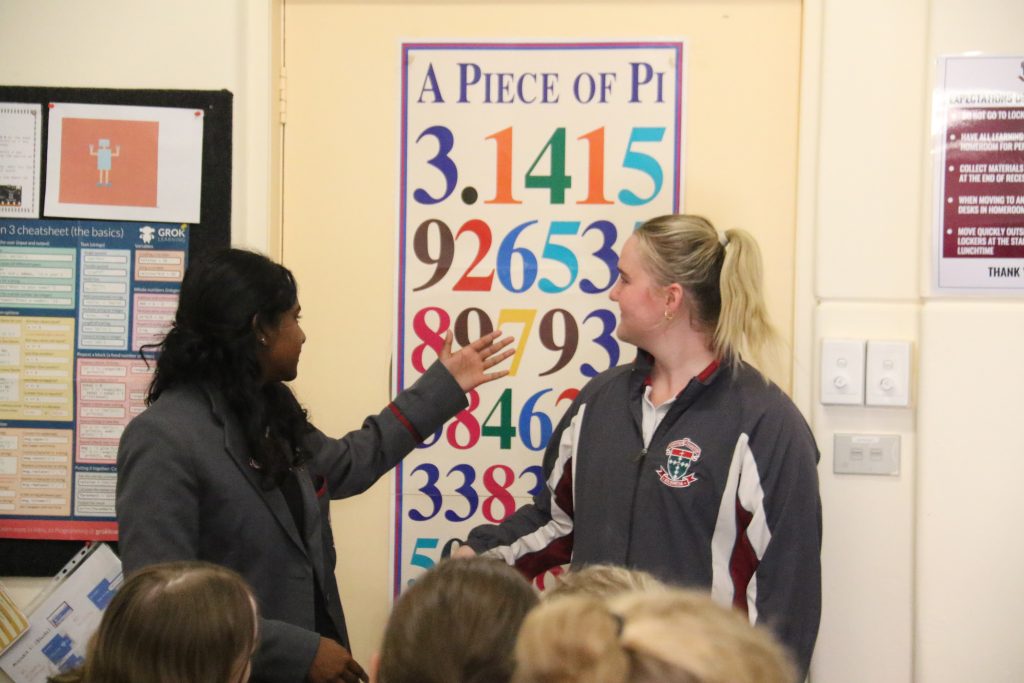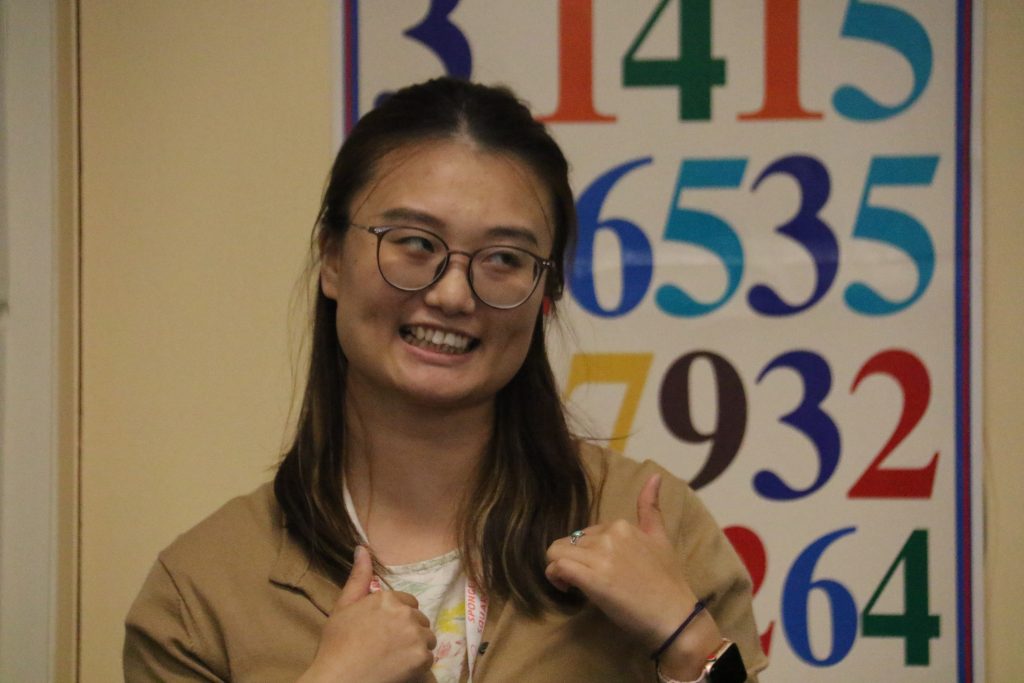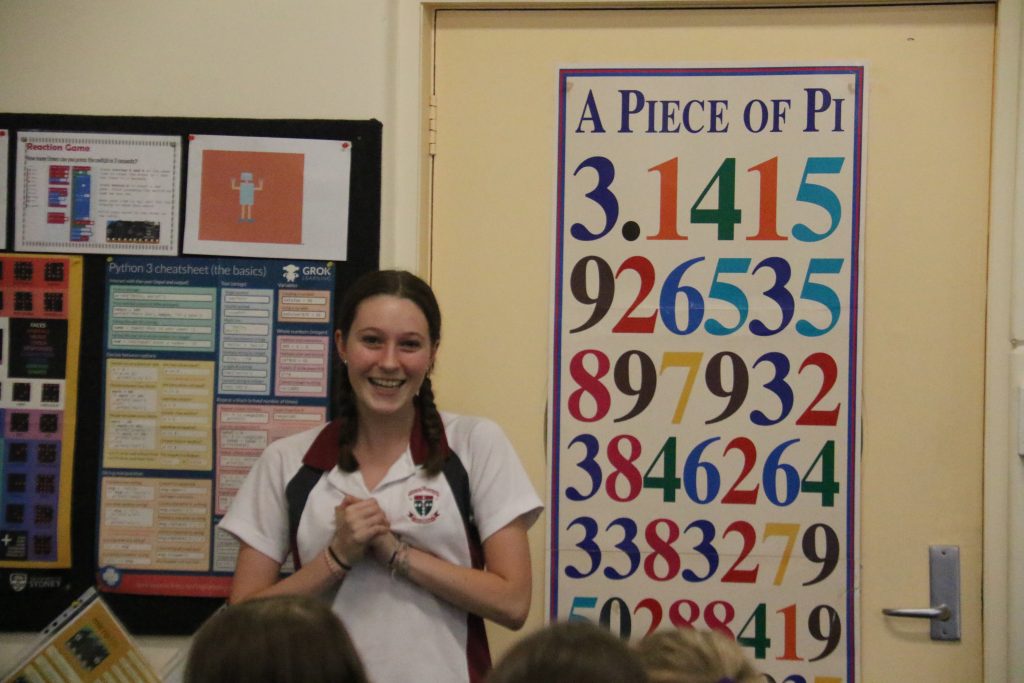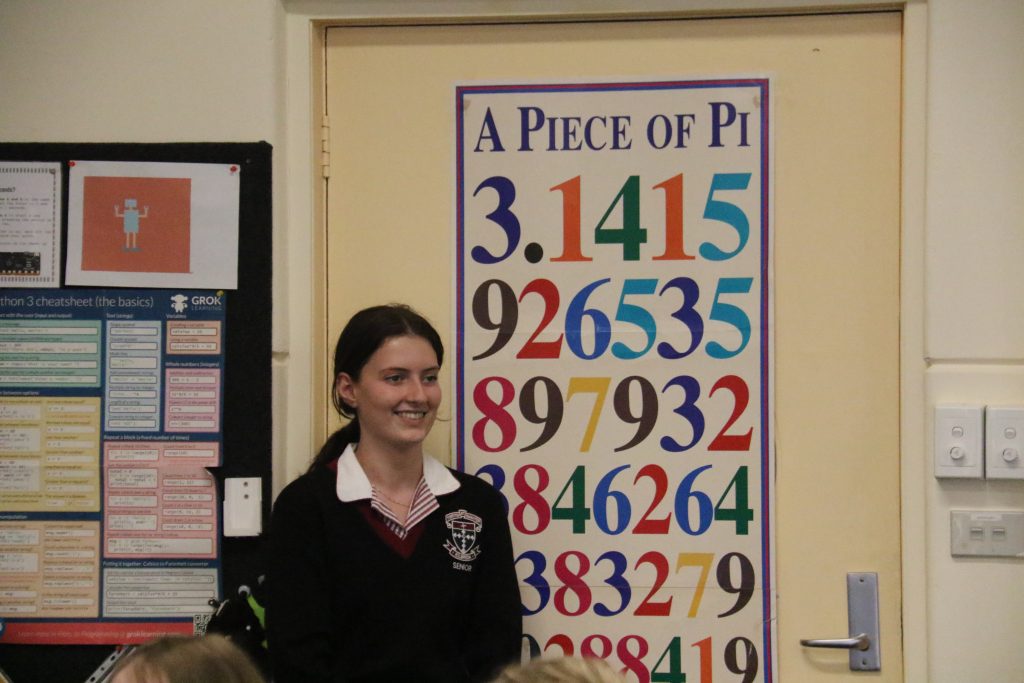Mathematics
Let’s rewind to 14 March, a day etched in our hearts as Pi Day, where we embarked on a journey through the whimsical world of mathematics and celebrated the enigmatic constant that is Pi! For those unfamiliar, Pi Day is a global celebration held on 14 March (3/14), paying homage to the first three digits of Pi, 3.14. But why this date, you may ask? It’s a charming coincidence that aligns perfectly with the numerical wonder we adore.
Our Pi Day festivities kicked off with a thrilling competition held in the STEM Room, where students gathered, eager to recite Pi to as many decimal places as humanly possible. The atmosphere was electric as Caitlyn Singleton from Year 12 stole the show with a jaw-dropping recitation of 100 decimal places—absolutely phenomenal, Caitlyn!! A round of applause to all participants for their enthusiasm and dedication. And let’s not forget to give a special mention to Ms Fiona Ye, who mesmerised us all with her bilingual recitation of 40 decimal places in both English and Chinese. Perhaps next year, she’ll dazzle us with a rendition in Greek!
As we marveled at Caitlyn’s impressive feat, let’s delve into some fascinating facts about our favorite mathematical constant:
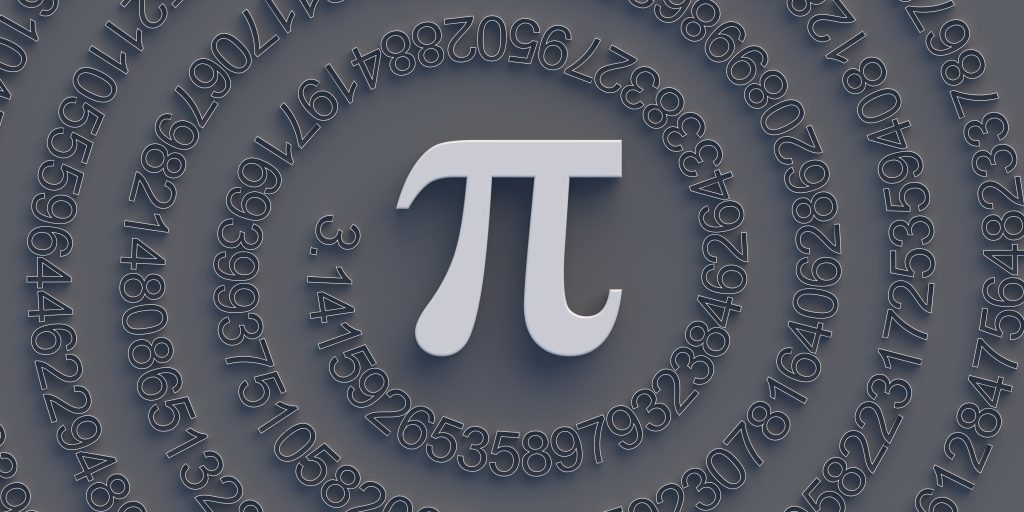
Did you know that the symbol for Pi has been in use for over 250 years, thanks to the pioneering efforts of Welsh mathematician William Jones? And it was the mathematical maestro Leonhard Euler who popularised this symbol, forever cementing its place in the annals of mathematics.
Pi’s allure lies in its infinite nature, with its exact value remaining elusive. This enigmatic quality ensures that the precise area or circumference of a circle can never be fully calculated—a delightful mystery that keeps mathematicians on their toes!
From Pi-lish, a language woven from the digits of pi itself, to Givenchy’s cologne aptly named “Pi,” the influence of Pi transcends mathematics, seeping into the realms of language and fashion.
Pi’s significance stretches beyond the confines of our classrooms, intersecting with history and culture in unexpected ways. Who knew that the pyramids of Giza were believed to embody the principles of Pi, or that Pi played a pivotal role in the O.J. Simpson trial?
As we bid farewell to another memorable Pi Day, let’s reflect on the cosmic connections that bind us to this mathematical marvel. It’s no coincidence that the birthdays of great minds like Albert Einstein align with the numerical significance of Pi Day, serving as a reminder of the enduring legacy of mathematics in shaping our understanding of the universe.
So here’s to the infinite wonders of pi and the timeless pursuit of knowledge it represents. Until next Pi Day, may your circles be perfectly round and your calculations ever precise!
Karen McMullen
Learning Leader: Mathematics






